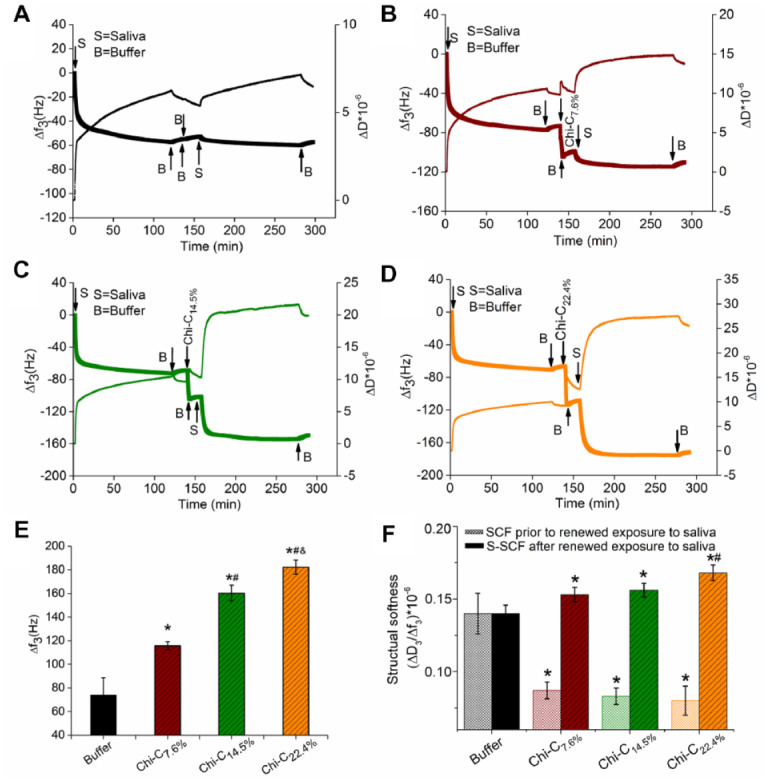Figure 1.

Kinetics of salivary conditioning film (SCF) formation, chitosan-catechol (Chi-C) adsorption to SCF, and renewed exposure to saliva to get S-SCF using the quartz crystal microbalance with dissipation (QCM-D). The mass adsorption was quantified by frequency shift and structural softness by calculating the ratio between dissipation and frequency shift. SCF treated with buffer (A), Chi-C7.6% (B), Chi-C14.5% (C), and Chi-C22.4% (D), respectively. (E) Frequency shift after renewed exposure to saliva and (F) structural softness of SCF with and without (buffer) Chi-C adsorption and renewed exposure to saliva. Error bar represents the standard deviation over 3 independent measurements. *Statistically significant (P < 0.05, 2-tailed Student’s t test) differences in softness and frequency compared to control film. #Significant differences in frequency or softness of S-SCF with Chi-C22.4% treatment compared to S-SCF with Chi-C7.6% treatment. &Significant difference in frequency between S-SCF with Chi-C14.5% and Chi-C22.4% treatment.
